A very modern springer shows its true performance to the editor
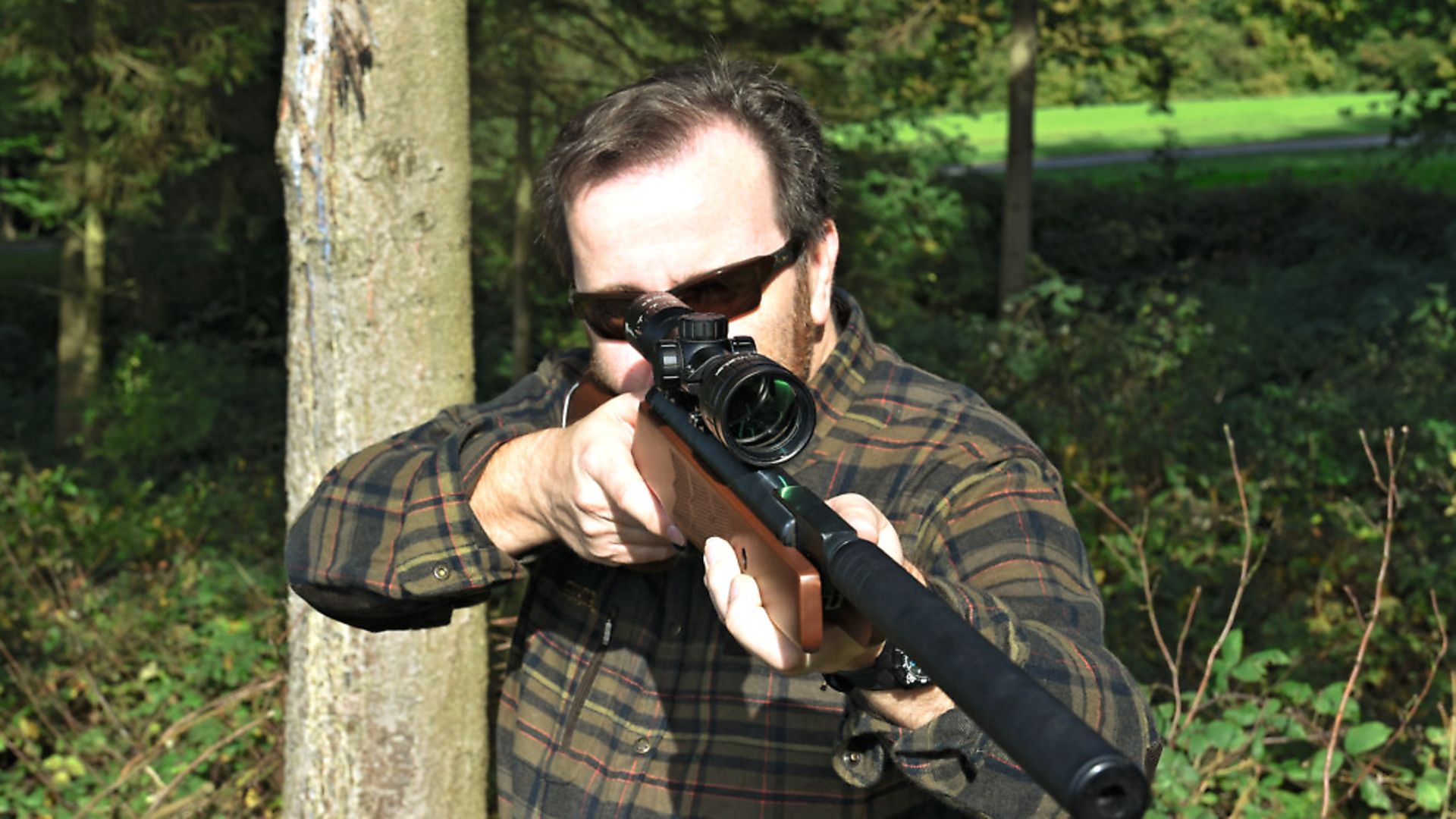 credit: Archant
credit: Archant
I get a steady stream of letters from readers telling me that I should cover more ‘real’ airguns, not pre-charged pneumatics, by which I take them to mean spring-powered ones. I recently wrote about my new Weihrauch HW35 Export, which pleased some of those people, and this month I’m reviewing another springer. Not quite in the all-time-classic league yet, but one with a strong following nonetheless. It’s a very conventional rifle and is all the better for it. There’s plenty of steel and it has a pleasing heft, yet weighs just 7lbs unscoped. Also, at just 40½” long it feels nice and compact and appears both modern and traditional, which is a clever trick.
What hits you first is the long Quantum ‘over-sleeve silencer’ which envelops the entire exposed section of the 11.5” barrel. The silencer extends 5.5” past the muzzle offering a large volume into which the high pressure air can expand. The clever part of the Quantum is the additional space between it and the barrel, which is also employed to absorb air, giving the Quantum much more capacity than a conventional screw-on type. It fits very rigidly over the barrel, making for a sure and solid grip as you break the barrel to cock it.
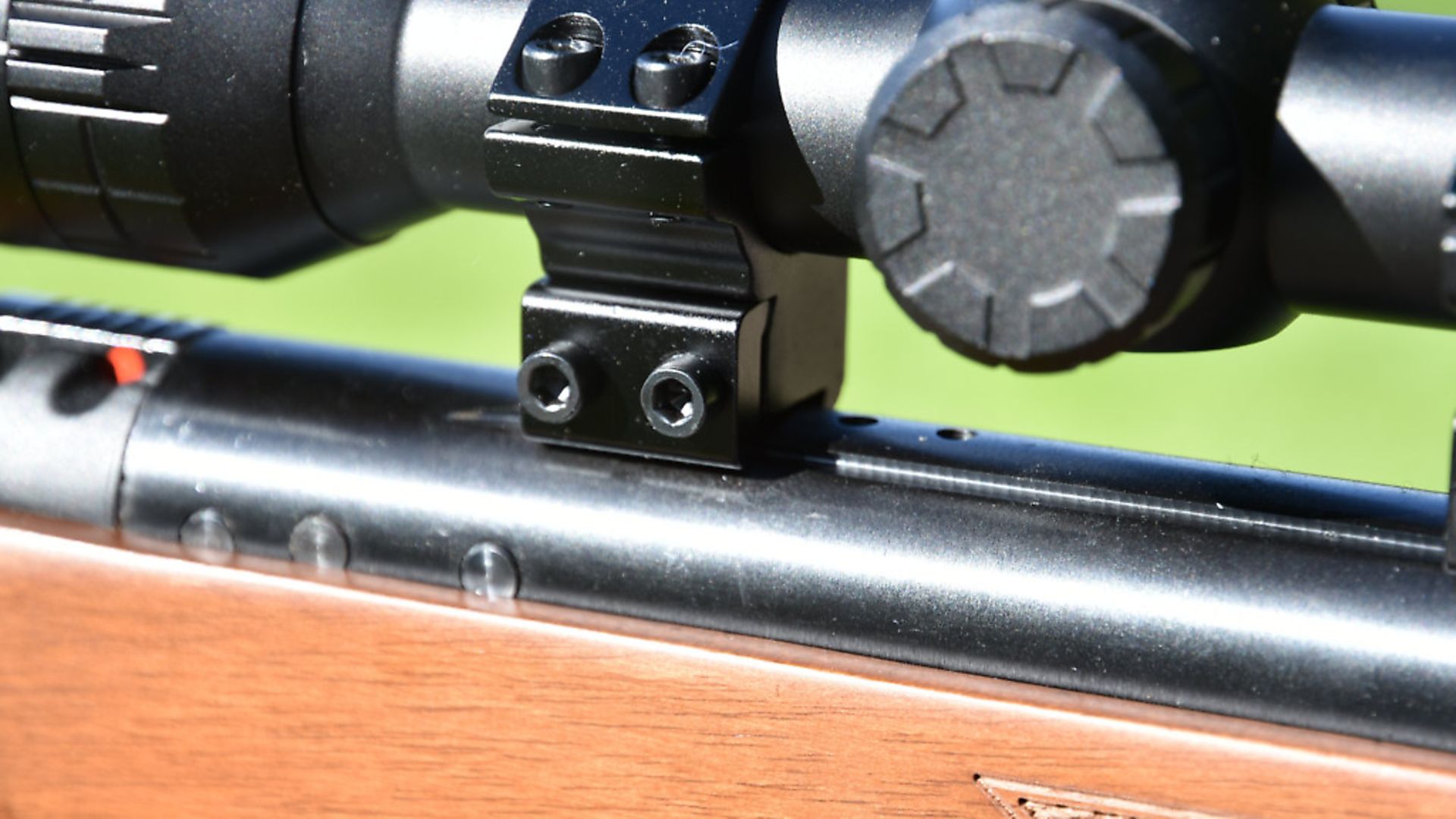 credit: Archant
credit: Archant
Simple and easy
Apart from this addition, the Stingray is a conventional break-barrel springer, which means that it’s simple to understand and use. I guess this design is the one most people think of when anybody says ‘airgun’. To load it, you tap the barrel down with the palm of your hand and then pull it down until you hear the trigger engage. This feels smooth and I noticed no spring noise at all. Next, you press a pellet into the now exposed breech, ensuring that it’s fully seated. If you don’t, the skirt can be crushed as the barrel is brought back in line with the cylinder.
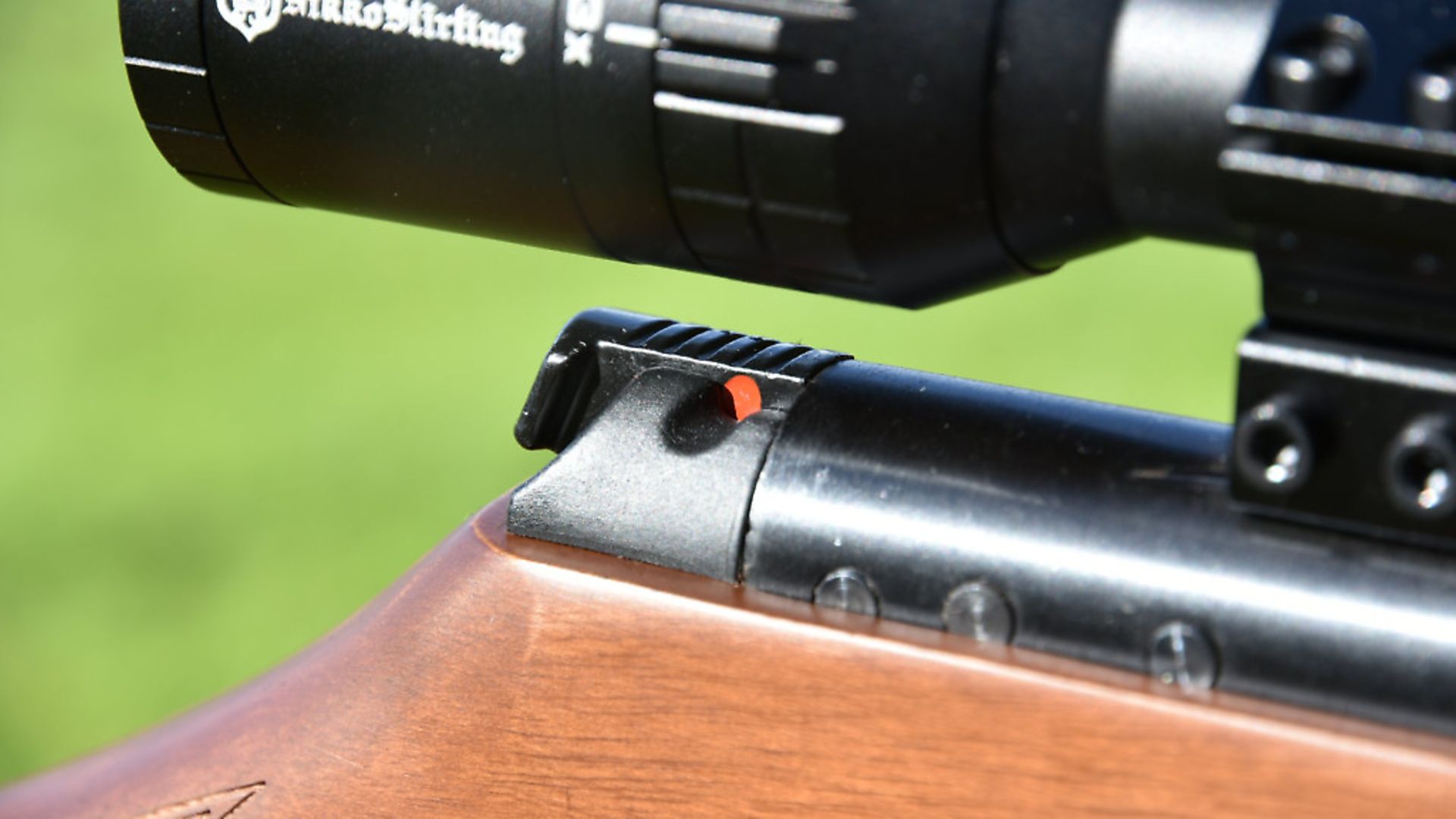 credit: Archant
credit: Archant
As the action is cocked, the excellent automatic safety comes on. This is ideally placed right at the back of the cylinder to be disengaged with the thumb of your trigger hand as you come onto aim.
It’s also manually resettable, a feature I value highly. Further, it’s quiet in use so won’t create a tell-tale metallic click that can be a giveaway of the hunter’s position.
The overall construction has a nice beefy feel as typified by the cocking link. It’s fully 8mm thick so you can be confident that it’s never going to bend. As it’s not the articulated kind, it needs a long slot in the wooden stock’s fore end, but again, this area is substantially built and I noted no flex. This really feels like a gun designed to be taken out on the farm and used properly. I noted also the that the barrel’s pivot bolt is adjustable to take up any wear that might occur over time, and importantly, this has a locking screw to ensure that it cannot work loose.
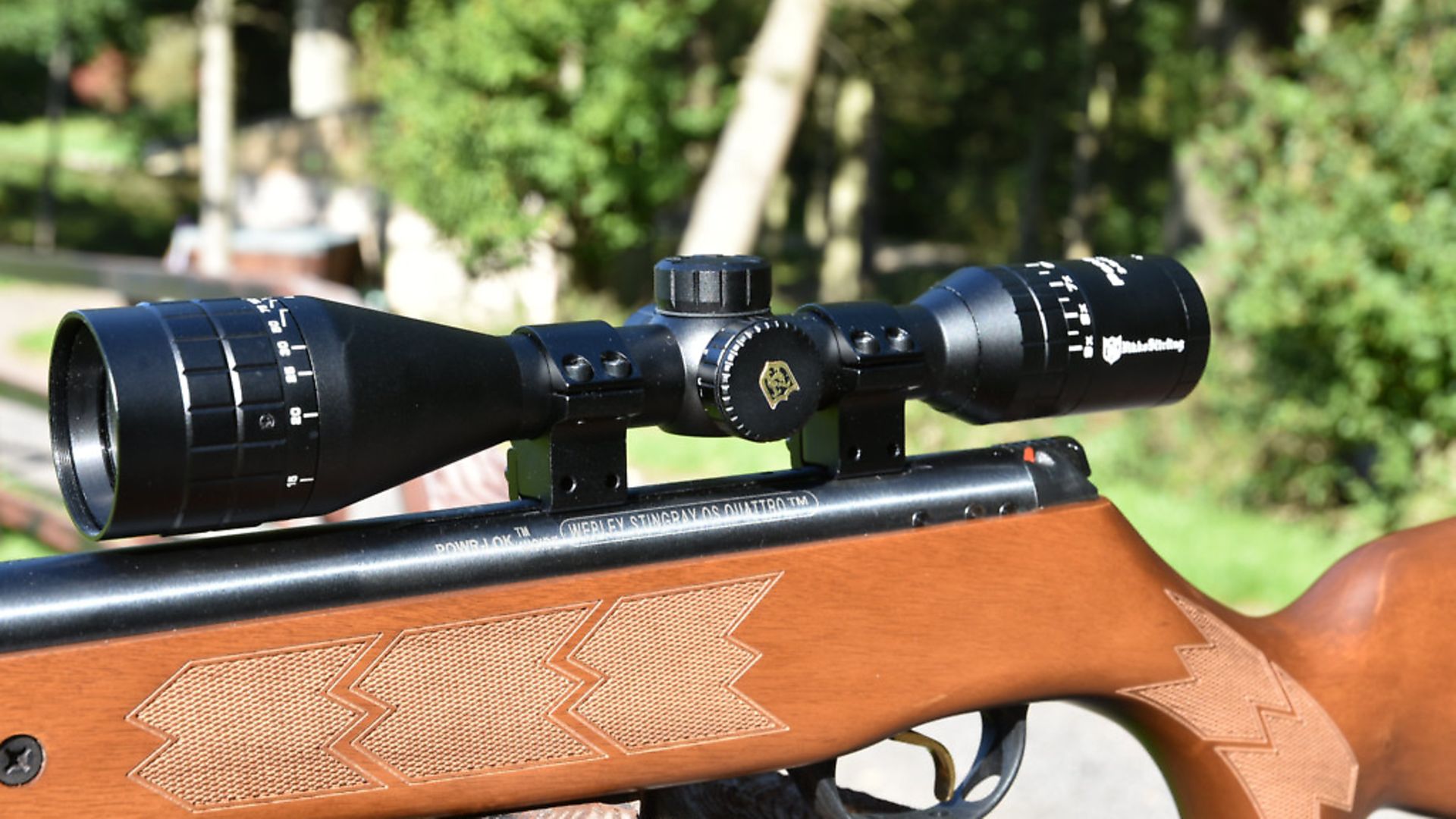 credit: Archant
credit: Archant
Ambidextrous
Further back, we find a hand-filling pistol grip with panels of smartly cut chequering on the sides. Like the rest of the stock, this is ambidextrous and matches the adult proportions of the rifle well. The reach to the gold-coloured trigger blade is quite long for my medium sized hand, but not uncomfortably so. Webley is proud of the Quattro trigger system and in a change to my usual rule of shooting test guns straight from the box, I made a small adjustment to the weight of the second stage simply by following the instructions in the manual. This made it better suited to my tastes and easier to be consistent.
Webley’s importer also brings in the Nikko Stirling range of scopes and they supplied a neat Panamax 3-9 x 40 AO IR, which for me is ideally suited to the Stingray and just what I’d have chosen. They also supplied a set of Nikko Stirling Match Mounts which are the double-screw type. Any spring-piston rifle can suffer ‘scope creep’ – that’s when the mounts are not able to hold the scope rail fully and movement between the two occurs. Webley anticipated this by adding a bolt-on stop at the rear of the rail. However, this is quite long and I found myself unable to position the scope far enough back to achieve correct eye relief. I solved this in a moment by removing the plate and using the recoil stop pin in the mount, in the hole vacated by the stop screw. This allowed me to move the scope and mounts back, making my head position comfortable and giving me the full field of view through the optic.
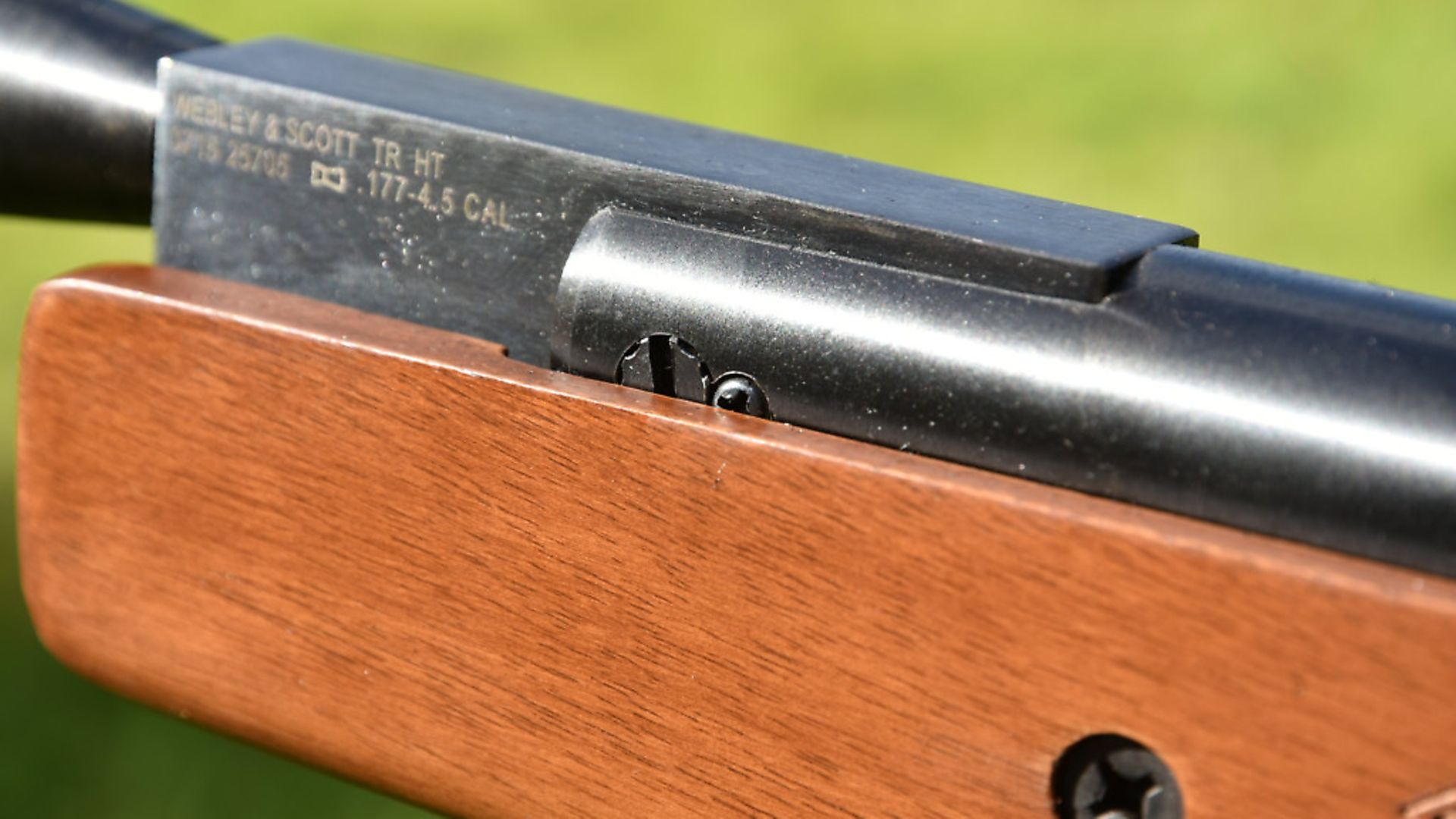 credit: Archant
credit: Archant
Clear and bright
The Panamax supplied uses a 1” body tube, which saves weight and allows the scope to be mounted nice and low over the action. Inside, we find the classic mil-dot reticle that can be a great help when making corrections in your hold for windage and elevation. This can be illuminated either red or green and the brightness can be adjusted to suit the conditions of the moment. Parallax adjustments are made with the collar mounted on the objective bell. This is a very neat design that keeps the assembly as narrow as possible, again allowing for low mounting over the cylinder. Like almost all rifles, the height of the cheek piece is set for open sights, making it rather low for scope use. One nice touch is that the breech block has no holes drilled to accept a rear sight, leaving it looking clean and tidy.
All spring-piston guns need some time to run in before they reveal their true performance, but I couldn’t resist running this new rifle over the chronograph and I was glad I did. It was impressively consistent straight from the box, and there was little evidence of dieseling as shown by smoke, a sign that the lubrication has been applied correctly during assembly. If a gun is just covered in oil and bolted together, you often get erratic results and clouds of smoke filling your workshop. I planned to re-run the chronograph work after my accuracy testing was completed to see what, if anything, had changed. A tin of pellets or two through a spring-piston rifle is usually enough to settle it down.
 credit: Archant
credit: Archant
Like a tuned gun
The smooth and quiet firing cycle reminded me of some expensive, highly-tuned rifles that I’ve shot over the years, showing just how far modern rifles have come. The cocking stroke is notably short, telling us that the piston’s stroke is short too, which plays its part in the snappy, quick feeling you get on firing. There was absolutely no vibration I could feel at all, which Webley’s technicians tell me is due to the combination of the short Powr-Lok spring and the long synthetic guides used to support it. These springs are very high quality, durable and precisely manufactured – all-important factors in the delivery of high performance from this type of rifle.
Even with the trigger roughly adjusted it was still quite heavy, but an expert I know assures me that the Quattro mechanism is hugely tuneable when you know how. There was no creep in the second stage at all, so the breakpoint was lovely and clean. Even set as it was, it was completely predictable, which makes accurate shooting so much easier, and I was delighted to find that the rifle/scope combination zeroed quickly and predictably, a sure sign of an accurate and repeatable set-up.
With everything zeroed nicely, I took my time and shot some leisurely groups to allow the action to run in over the next 250 shots as I came to know the rifle a little better. As much as I resisted, I just couldn’t help starting to chase groups. I planned just to run the rifle in, but accuracy turns me on and I couldn’t help myself when each and every pellet landed under the cross hair. Serious technique and concentration kicked in and soon pretty little ½” groups started forming on the target cards at 25 yards. I’m here to tell you that this recoiling rifle will outshoot some of the pre-charged pneumatic rifles I’ve tested once the right technique has been applied. Please remember that it was hardly run in at all.
Mosquito sting
On that subject, with half a tin of pellets through the barrel, I ran it through my trusty SKAN chrono’ where it produced the ideal 11.5 ft.lbs. muzzle energy with shot-to-shot consistency of just 9fps over 25 shots. The Mosquito pellets were straight from the tin with no washing, lubing or sizing applied. Ideal power and great accuracy tell me that the legendary Mosquito stings again!
If you’re thinking that you need a conventional break-barrel, spring-piston gun at a sensible price, then the Stingray has to be on your ‘must-see’ list. It’s solidly built and has good performance straight from the box. Just as in my early airgun hunting career, there’s more to be had from some subtle tweaks and tuning to release the full potential of this well-built rifle. I liked the compact design, modest weight and smooth firing cycle and the certain promise that this is a real hunter’s rifle that won’t let you down in the field.
Webley has had its ups and downs over the years and, for me, this really is one of the ‘ups’. The performance is of a mature rifle that tells you what it is – a well-developed design that’s been enhanced by the clever internals, and the long Quantum silencer that puts the icing on the cake for the keen hunter.
Specification
Manufacturer: Webley Airguns
Importer: Highland Outdoors
Model: Stingray Quantum
Type: Spring-piston
Action: Break-barrel
Trigger: Quattro, fully adjustable
Safety: Automatic, resettable
Length: 40.5” (103cm)
Weight: 7lbs (3.15kg)
RRP: £325.99
For more information or to order yours, visit the website here.